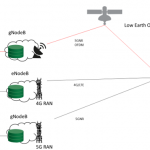You are currently viewing SemiWiki as a guest which gives you limited access to the site. To view blog comments and experience other SemiWiki features you must be a registered member. Registration is fast, simple, and absolutely free so please,
join our community today!
5G’s Departure from Its Predecessors
In each move from 1G to 4G people became accustomed to seeing the new generation as primarily offering increased bandwidth and efficiency. It would be a mistake to view the transition to 5G along these same lines. 5G takes Radio Area Networks (RANs) from a use model primarily for cell phone communications… Read More
When SpaceX launched 60 satellites into orbit last month – the first of a planned fleet of 12,000 such satellites which will ultimately deliver terrestrial Internet access in concert with earth-bound stations – astronomers were alarmed at the apparent impact on earth-based observatories from light pollution.… Read More
Conventional wisdom is that 5G is still somewhere on the hype curve – expected to arrive someday but still not a near-term technology. As is often the case, conventional wisdom seems to be wrong. Coming out of this year’s Mobile World Congress in Barcelona, semiconductor and carrier heavyweights have committed to accelerate deployment… Read More
If one wireless IoT technology fit every possible use case, we would have one specification. Many tradeoffs – battery life, mobility, indoor coverage, licensed versus unlicensed spectrum, and more – have made for many potential solutions. A heated discussion right now is over the future of LPWAN technologies, with LoRA, SIGFOX,… Read More
5G mobile communication is widely forecasted to be a market reality seven to ten years from now. As envisioned by the International Telecommunications Union Radiocommunications sector (ITU-R), in their next generation International Mobile Telecommunication or IMT-2020 documents, 5G comprises three top-level goals: enhanced… Read More
Back in December 2013, during a 3GPP Radio Access Network (RAN) plenary meeting, Ericsson and Qualcomm introduced LTE-Unlicensed, a scheme that puts LTE-Advanced signals in the 5 GHz unlicensed UNII band, in conjunction with an LTE “anchor” signal in a licensed band. The objective is supplemental downlink bandwidth… Read More



